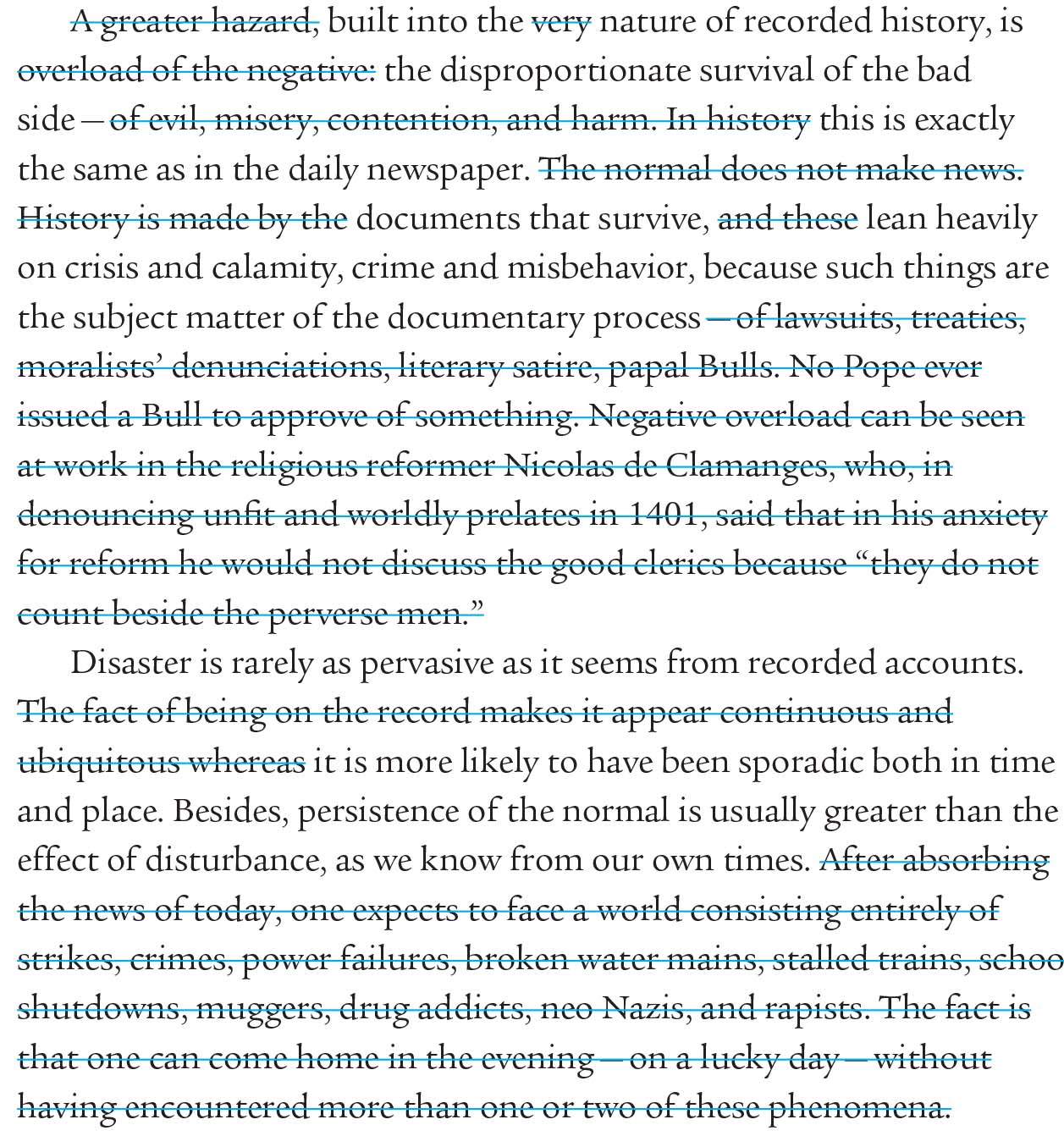Summarizing Concisely
See Tuchman’s original passage.
To illustrate how summarizing can serve you, this example sums up the passage from Tuchman:
SUMMARY
Tuchman reminds us that history lays stress on misery and misdeeds because these negative events attracted notice in their time and so were reported in writing; just as in news stories today, bad news predominates. But we should remember that suffering and social upheaval didn’t prevail everywhere all the time (xviii).
This summary merely abstracts from the original. Not everything is preserved — not Tuchman’s thought about papal Bulls, not examples such as neo-Nazis. But the gist — the summary of the main idea — echoes Tuchman faithfully.
Before you write a summary, an effective way to sense the gist of a passage is to pare away examples, details, modifiers, and nonessentials. Here is the quotation from Tuchman as one student marked it up on a photocopy, crossing out elements she decided to omit from her summary.

Rewording what was left, she wrote the following condensed version:
SUMMARY
History, like a morning newspaper, reports more bad than good. Why? Because the documents that have come down to us tend to deal with upheavals and disturbances, which are seldom as extensive and long-lasting as history books might lead us to believe (Tuchman xviii).
For more on avoiding plagiarism and using accepted methods of adding source material, see Ch. 12 and D1 in the Quick Research Guide
In writing her summary, the student could not simply omit the words she had deleted. The result would have been less readable and still long. She knew she couldn’t use Tuchman’s very words: that would be plagiarism. To make a compact, honest summary that would fit smoothly into her paper, she had to condense the passage into her own words.